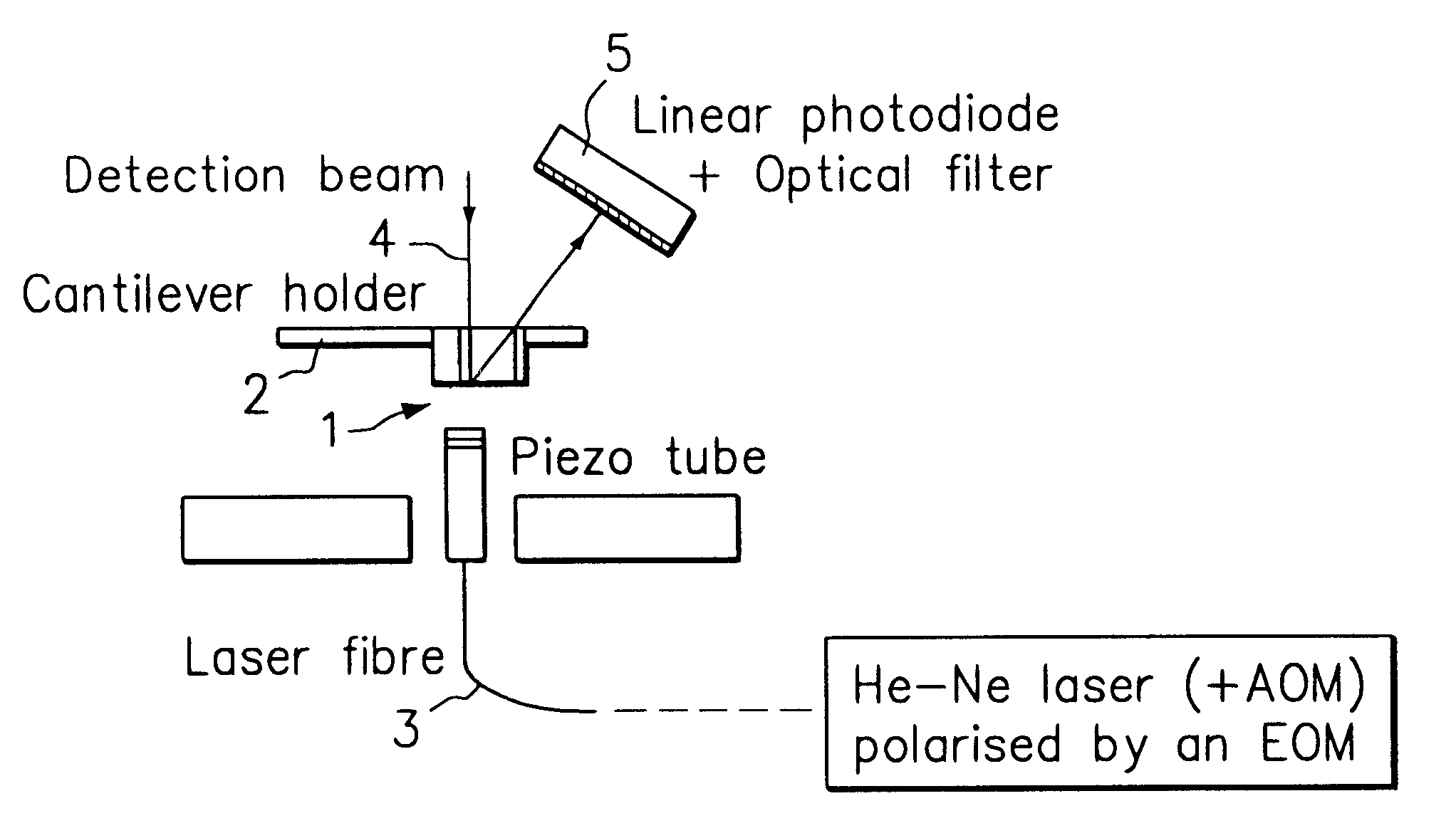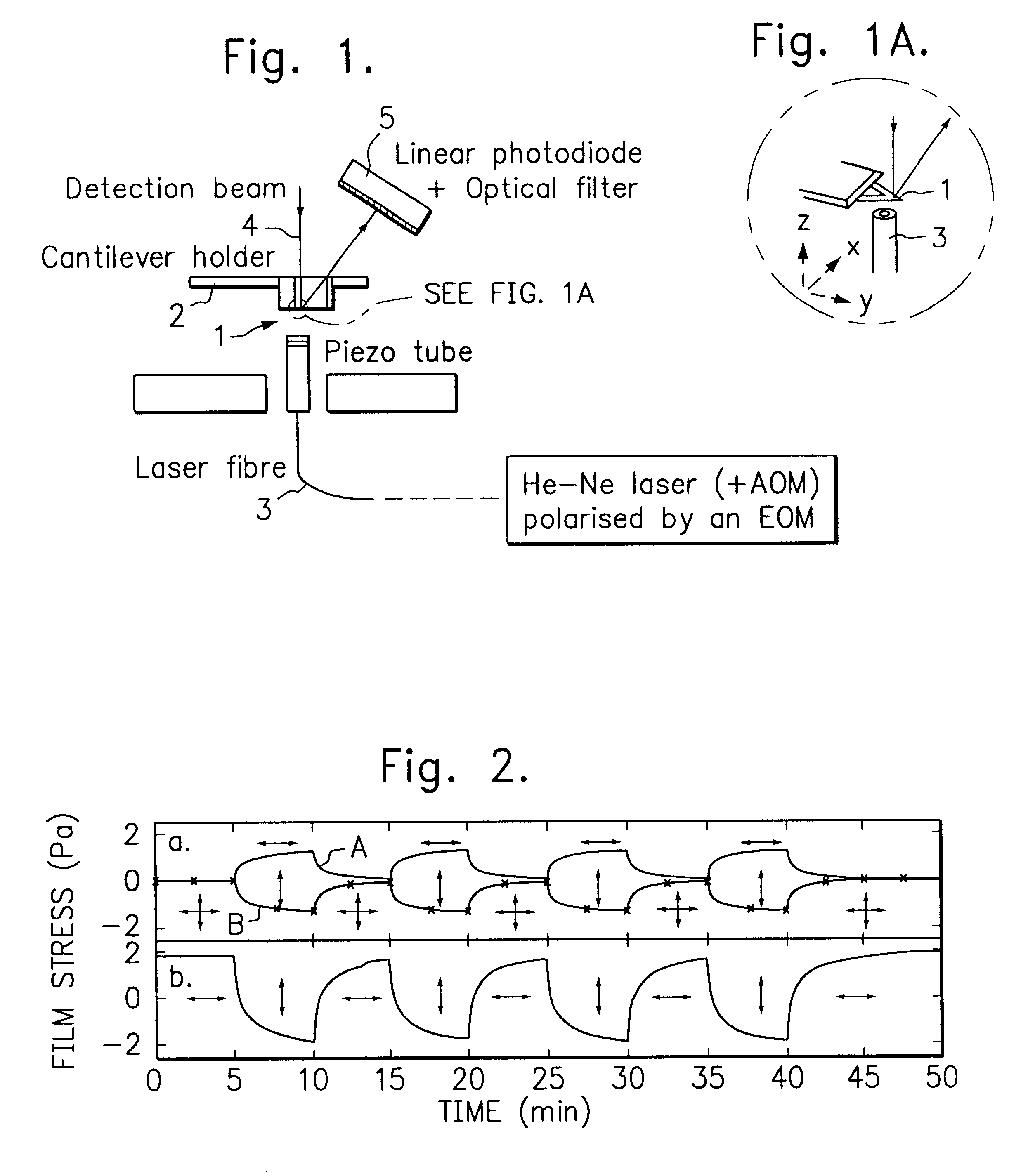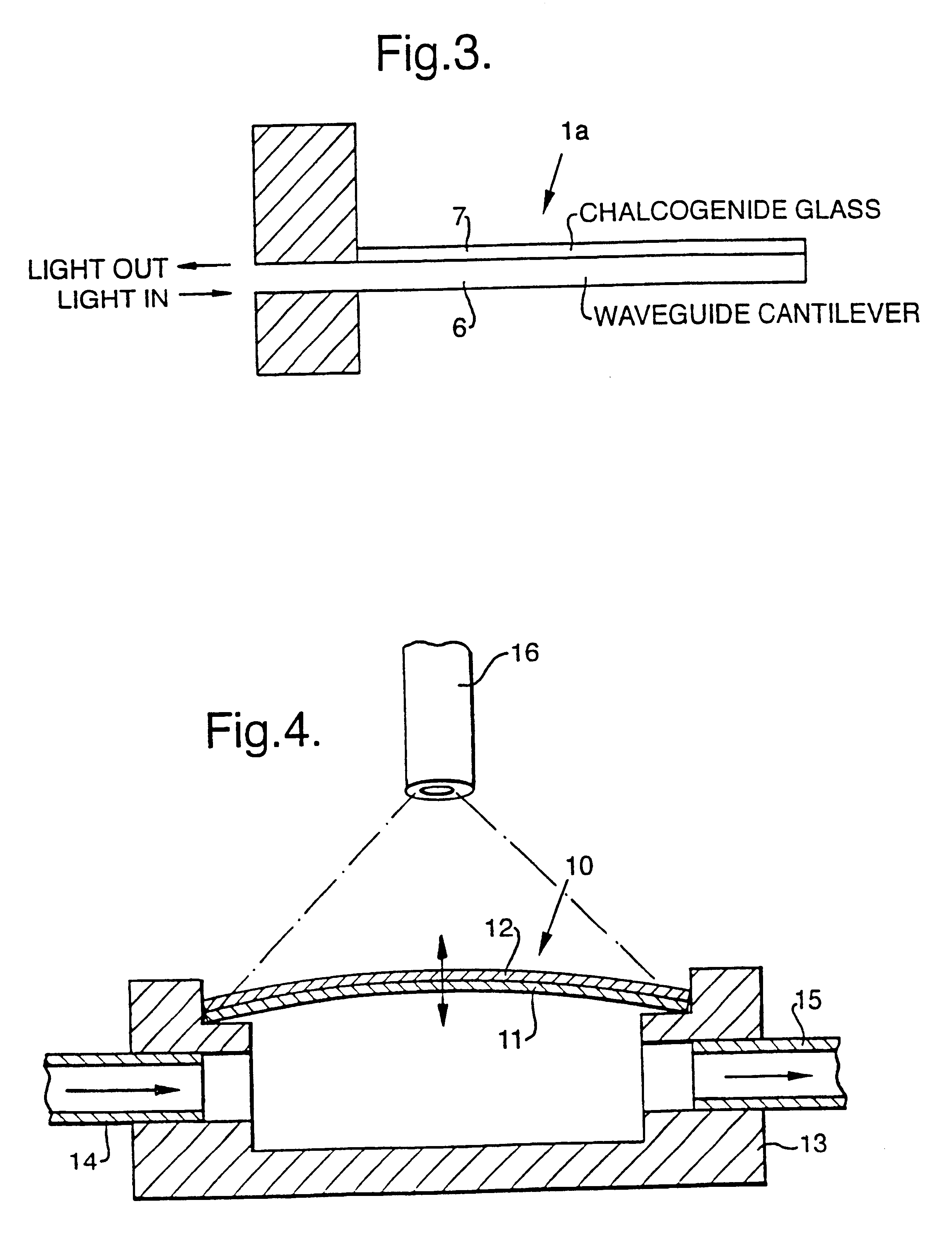Opto-mechanical device
a technology of optical mechanical devices and scalar effects, applied in the direction of positive displacement liquid engines, optical radiation measurement, instruments, etc., can solve the problems that the application of the opto-mechanical device using this scalar effect is limited, and achieve the effects of reducing the size of the devi
- Summary
- Abstract
- Description
- Claims
- Application Information
AI Technical Summary
Benefits of technology
Problems solved by technology
Method used
Image
Examples
Embodiment Construction
An atomic force microscope typically includes commercially available V-shaped microcantilevers 1. They are fabricated from silicon nitride with typical dimensions 200 .mu.m length, 20 .mu.m width and 0.6 .mu.m thickness. Such microcantilevers 1 are used in an atomic force microscope as a test rig for the present invention. One surface of the microcantilevers 1 is coated with a thin layer, about 20 nm thick, of gold to increase its optical reflectivity. The other surface has a thin amorphous As.sub.50 Se.sub.50 film of thickness about 250 nm evaporated onto it. The microcantilever 1 is then mounted on a cantilever holder 2 of an atomic force microscope. A helium-neon laser, the output of which is square-wave modulated at around 50 Hz by an acousto-optic modulator (AOM) and then polarised in an electro-optic modulator (EOM) is guided via a polarisation preserving fibre 3 and used to illuminate the whole of the surface of the amorphous As.sub.50 Se.sub.50 film.
To monitor movement of th...
PUM
 Login to View More
Login to View More Abstract
Description
Claims
Application Information
 Login to View More
Login to View More - R&D
- Intellectual Property
- Life Sciences
- Materials
- Tech Scout
- Unparalleled Data Quality
- Higher Quality Content
- 60% Fewer Hallucinations
Browse by: Latest US Patents, China's latest patents, Technical Efficacy Thesaurus, Application Domain, Technology Topic, Popular Technical Reports.
© 2025 PatSnap. All rights reserved.Legal|Privacy policy|Modern Slavery Act Transparency Statement|Sitemap|About US| Contact US: help@patsnap.com



